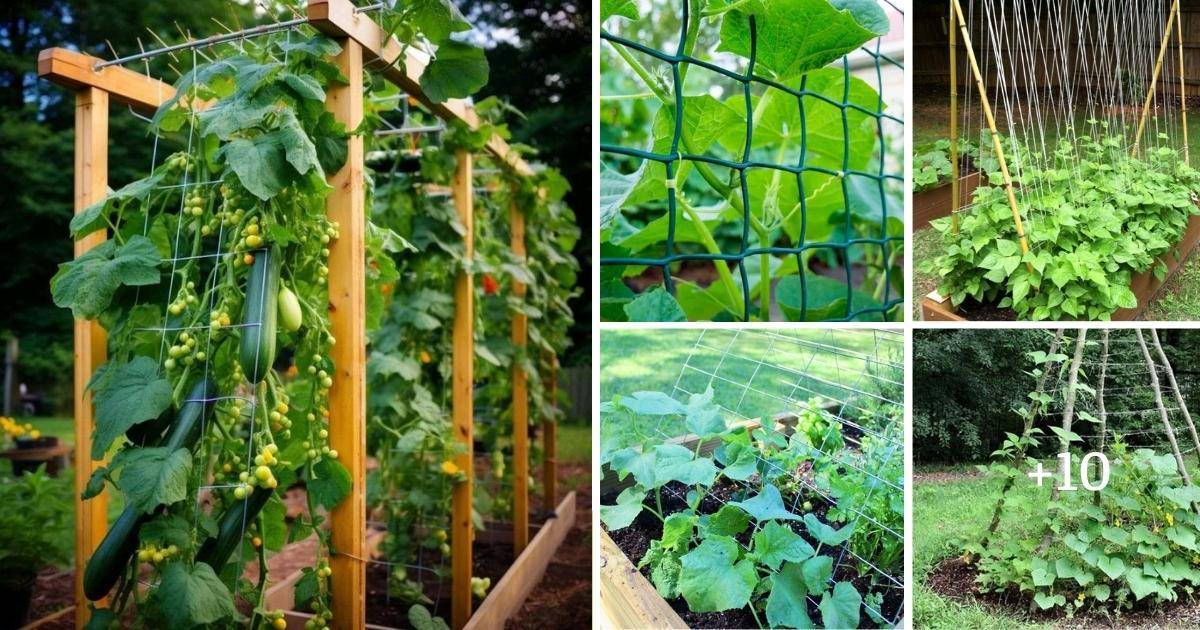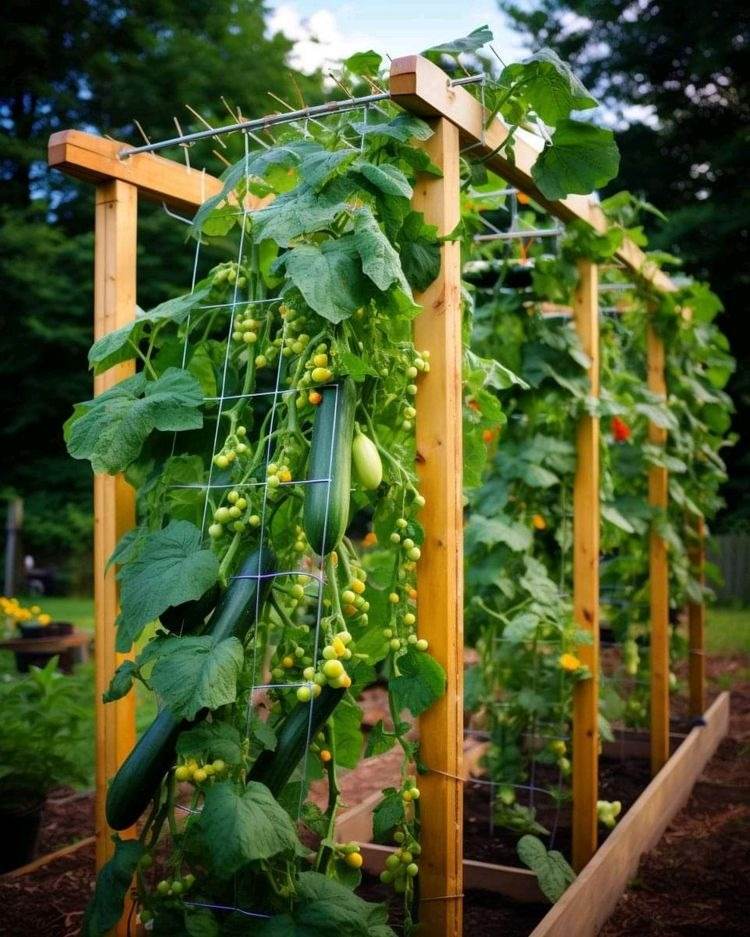How Trellises and Supports Turn Your Cucumbers into a Bountiful Harvest

Most cucumber growers talk a big game about trellises—“just set one up and watch the magic”—but here’s something you won’t find in those shiny how-to guides: there are hidden pitfalls that sabotage yields in ways nobody likes to admit. (Ask me about my 2018 “Cucumber Curtain Collapse”... or better yet, let’s make sure you avoid it altogether.)

If you want your cucumbers not only climbing, but thriving, understanding these less-talked-about blunders is just as important as picking the right type of support. I’ve seen first-time mistakes turn into season-long headaches—and after fixing them more times than I care to count, I can tell you exactly where well-meaning gardeners go wrong.
Let’s break down what really matters if you want bushels of perfect cucumbers, not a tangle of missed opportunities.
1. The “Sturdy Enough” Illusion: Underestimating the Weight
Everyone loves the idea of a cheap DIY trellis—until July hits and you’re staring at a spaghetti mess where your “sturdy” bamboo teepee used to be. Here’s a number almost nobody shares: mature cucumber vines with fruit can easily top 20 pounds per eight-foot row by midseason, especially after rain saturates everything.
Back in 2019, I built an A-frame out of thin furring strips because they were on sale ($1 each!). It looked great for two weeks… then collapsed dramatically during a thunderstorm. Lesson learned: if it feels borderline when empty, it’s nowhere near strong enough loaded with wet foliage and heavy fruits.

Mistake Most Make: Choosing supports that flex under pressure—or skipping anchors in windy spots.
What Works: Set posts at least 12 inches deep, use weatherproof fasteners (not just knotted twine), and test by leaning your weight gently against the structure before planting. If it wobbles now, it’ll be toast by midsummer.
2. Trellis Procrastination Syndrome
This is the trap that gets even organized gardeners: putting off installation until seedlings are already sprawling everywhere (“I’ll wait until they get bigger!”). By then, roots are tangled where stakes need to go, and every touch risks snapping delicate stems—which means half your plants might never recover.
I’ve lost entire rows this way! These days, my rule is simple: install supports the same day you prep your beds—even before sowing seed. Yes, it feels odd anchoring an empty trellis over bare soil, but trust me: future-you will thank present-you when training shoots becomes effortless instead of a daily tangle-rescue mission.

3. Over-Tying or Ignoring Training Altogether
When those first tendrils show up, enthusiasm takes over—sometimes too much so. Tight knots choke stems (been there; nothing sadder than watching a promising vine die off from what looks like an innocent tie). On the flip side? Letting new growth wander unchecked leads to that classic “green octopus” look and cucumbers hiding deep inside leaves where bugs feast undetected.
In my experience, soft Velcro garden tape beats all (a $6 roll has lasted three seasons)—it stretches as stems grow and never bites into tender tissue.
Unexpected Tip: Don’t train every shoot upwards! Around knee height, let one or two side arms run laterally for extra sun exposure—but keep everything above tidy and vertical for airflow and easy harvests.
4. Pruning Paralysis…or Over-Pruning Panic
The advice to prune lower shoots sounds simple until you’re kneeling in the dirt asking yourself: “Is this a sucker? What if I snip too much?” My first time trying this left half my plants looking like plucked chickens because I got carried away with pruning shears.

Here’s how I keep it straight now:
- Only pinch suckers below knee level.
- Limit yourself to removing no more than 25% of total side growth at once.
- Anything growing into the center of the plant or crowding fruit gets trimmed; outer leafy shoots stay for shade/protection in peak sun.
Don’t stress perfection—the goal is airflow and energy direction, not architectural beauty!
5. The Hidden Cost of Skimping on Support Materials
It’s tempting to grab whatever string or leftover plastic netting you find at home—but UV rays shred cheap plastics quickly (ask me how many times I’ve come out after a storm to find all my vines lying flat because bargain-bin netting snapped). In one season alone (2020), replacing failed netting cost me double what just buying quality mesh would have upfront—plus hours spent re-training vines in August heat.
Invest once in heavy-duty nylon netting or galvanized livestock panels ($15–$30), and they’ll last years without drama.

6. Not Monitoring After Storms—or During Growth Spurts
Here’s something even veteran gardeners slip up on: once cucumbers start climbing fast (and trust me—they can grow six inches overnight during humid spells), weak points reveal themselves quickly. Last June I lost nearly half my crop when wind loosened an anchor bolt; I didn’t catch it for three days because work was busy…and found bent posts plus snapped vines when I finally checked back in.
Make post-storm inspections routine—especially during flowering/fruit set when weight increases dramatically.
7. Forgetting About Microclimate Effects
Vertical growing changes things—you get more sun exposure but also more wind/heat stress up high. In my south-facing garden beds during July heatwaves, upper leaves sometimes get crispy unless I water deeply at soil level every morning (mulch helps!). If your spot bakes midday or catches strong gusts off fences/buildings, consider shading upper trellis sections with floating row cover fabric during extreme weather events—it saved my harvest during last summer's scorcher week (105°F!).
Recap Checklist: Avoiding Those Sneaky Mistakes
- Pick solid supports—test their strength before planting
- Install everything early—even if beds look empty
- Use stretchy ties; check weekly for pinched stems
- Prune only what blocks airflow below knee-high
- Invest in UV-stable mesh/panels from day one
- Inspect after storms/growth spurts (add calendar reminders)
- Adjust watering/shade based on sun/wind exposure above ground level
When you learn from these overlooked errors—not just follow generic advice—you don’t just boost yield; you save time and heartbreak too. Nothing feels better than harvesting armloads of flawless cukes while everyone else is still battling tangled vines or powdery mildew outbreaks!
So next time someone says “just put up a trellis,” remember: true success comes from dodging all those little missteps no one talks about…and enjoying baskets full of crisp cucumbers as proof!



